Humpback whales
Megaptera novaeangliae
By: Dr. A. H. Kopelman
Slow motion humpback terminal dive, 8/3/22, off Montauk from CRESLI_ Inc. on Vimeo.
Humpback whale (Megaptera novaeangliae)
The humpback whale (Megaptera novaeangliae) is regularly found in the New York Bight throughout the year, but its abundance fluctuates widely. In some years they are very numerous with aggregations of up to 20 or more individuals. In other years only a few individuals are present. Juvenile humpbacks are some of the baleen whales regularly found in shallow water and have been observed for extended periods of time within Long Island Sound, Block Island Sound, Gardiner's Bay, the south shore of Long Island from the Rockaway to Montauk, and in the NY Harbor area.
In some instances humpbacks have also been observed moving in and out of some inlets along the south shore of Long Island (Shinnecock, Moriches, Fire Island, and New York Harbor). Humpbacks are found in the greatest numbers around Long Island between the months of June through October, but are in the waters of the NY Bight throughout the year. Usually, juvenile humpbacks (smaller than 12 m in length) feed close to shore on bunker (Atlantic menhaden), while non-juvenile humpbacks (greater than 12 m) in length feed further away from shore on shoals of small schooling fish such as sand eels (sand lance), herring, or mackerel, and they will also feed on small shrimp-like crustaceans called krill (euphausiids) and even smaller crustaceans known as copepods.
Our trips to the Great South Channel, bring us to a major feeding area east of Nantucket, where we've encountered humpbacks on every trip (2002-2019, and 2024) and (the numbers of individuals have ranged from 4 to 109 individuals per trip).
Humpback females can reach lengths of 60 feet and weights of 100,000 lbs. As in other baleen whales, we are finding that the age-old idea of mysticetes lack of social behavior is incorrect. We know of stable association is between a mother and her calf, which may last as long as 1 year (2 years for right and bowhead whales). However, unlike other baleen whales, humpback do feed cooperatively and some individuals are often found in close association with certain others over large areas and spans of time. We are constantly learning more about the social behaviors of humpback and other baleen whales. For more information, take a look at Clark, C. W., & Garland, E. C. (Eds.). (2022). Ethology and Behavioral Ecology of Mysticetes. Springer.
The flippers of a humpback are quite long (about 1/4 - 1/3 of the body length as seen in the image below), hence the genus Megaptera which translates from Latin as "large winged." In part, due to the large flippers, humpbacks are relatively slow swimmers but are also quite maneuverable.This flippers have tubercles (bumps) on the leading edge which have significant hydrodynamic effects. The tubercles provide lift and allow these whales to rise through the water at a steep angle without stalling, enabling breaching with relatively less energy.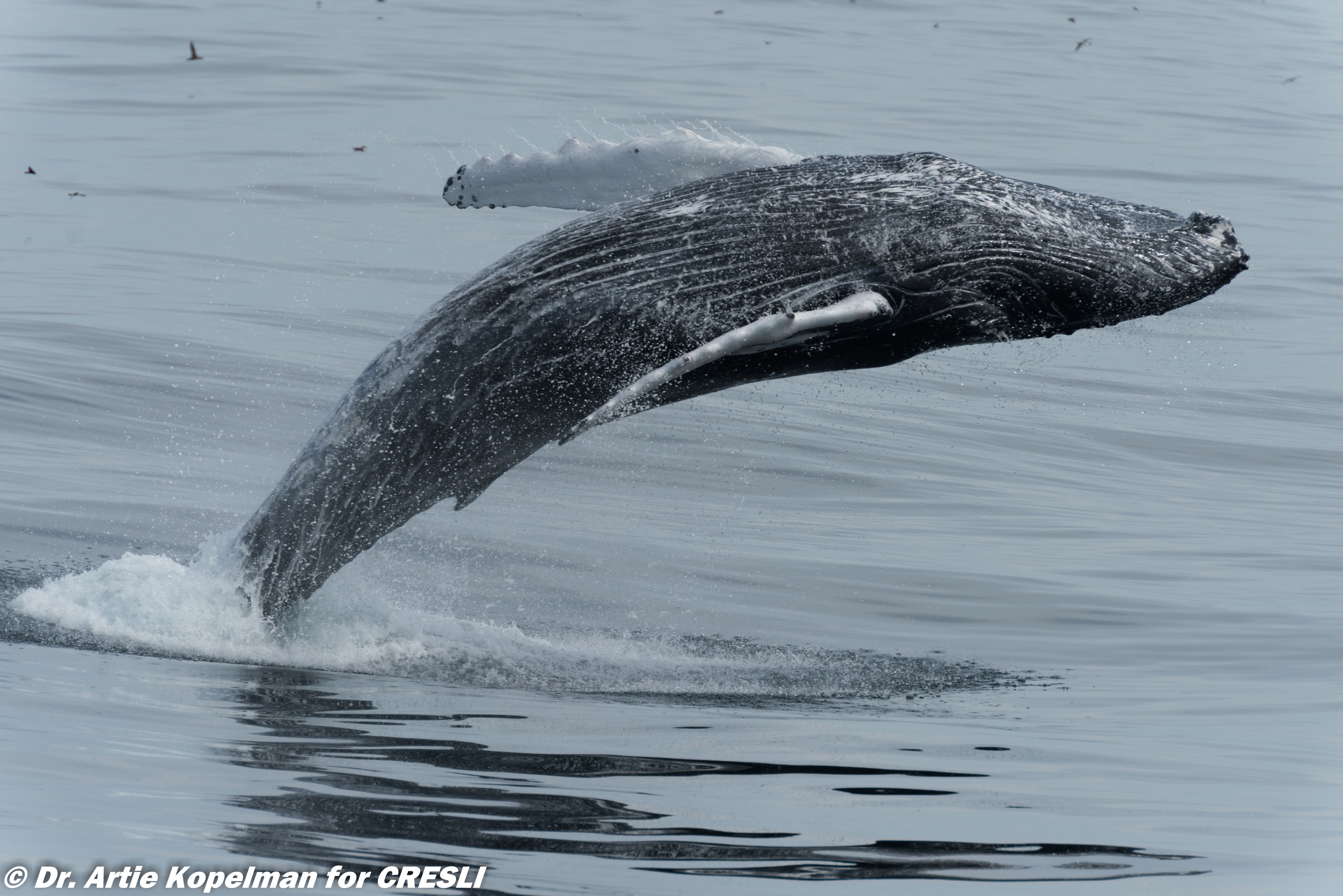
The tubercles also allow humpbacks to rotate rapidly on the axis of extended flippers, thus allowing them to turn quickly into concentartions of prey. Humpbacks use a variety of unique behaviors involving bubbles to capture their prey. No other cetacean, as faas we can tell, uses bubles to concentrate prey. Humpbacks utilize bubble nets (aka bubble rings), bubble walls, and bubble clouds (aka bubble mists). In each behavior, bubbles trap fish, and the humpbacks turn into the mass of trapped fish and feed.
For a detailed description of humpback behaviors you can take a look here at a document from our colleagues at Whale and Dolphin Conservation
In order to dive deeply on a terminal or sounding dive, humpbacks usually lift their flukes out, this enables us to see and photograph the underside of the fluke. The markings and patterns of pigmentation on the underside of the fluke are unique for each humpback and can be used for identification purposes.
If you are interested inhow to determine the sex of a humpback whale, our colleaugues at the Pacific Whale Foundation have done an excellent job that can be seen here (https://www.pacificwhale.org/blog/how-can-you-tell-a-male-and-female-humpback-whale-apart/)
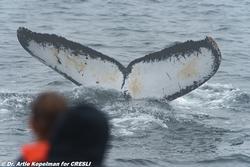
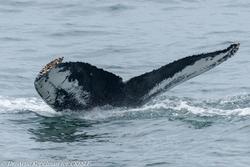
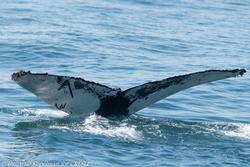
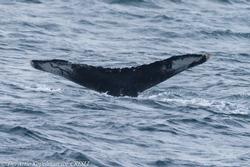
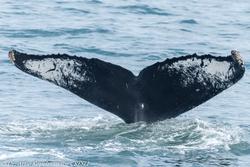
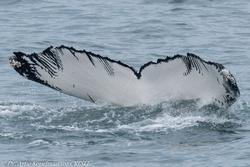
Humpbacks can be found during our trips in the waters off Montauk, as well as Great South Channel, NY Harbor, and Stellwagen Bank, to name a few.
To see the distribution of CRESLI's humpback sightings off Montauk you should go to the NY Geographic Information Gateway and/or go to OBIS-SEAMAP (Ocean Biodiversity Information System Spatial Ecological Analysis of Megavertebrate Populations) and search for CRESLI
As of August 1, 2024, we have had 1234 humpback encounters in our trips to the Great South Channel, Stellwagen Bank, and Montauk. We have photo-identified 749 different humpback whales during these trips with the assistance of Laura Howes of Boston Harbor Cruises, the Gulf of Maine Humpback group, Dr. Jooke Robbins of the Center for Coastal Studies, Mason Weinrich of the Whale Center of New England, the Gotham Whale Western NY Bight humpback catalog, HappyWhale, and Flukebook, and The North Atlantic Humpback Whale Catalogue maintained at Allied Whale.
As of January 2, 2025, CRESLI trips in the waters around Montauk have had 423 humpback whale encounters and have identified 339 different humpbacks.
CRESLI, Gotham Whale, Wildlife Conservation Society Ocean Giants Program, Atlantic Marine Conservation Society, and the Thorne Lab at Stony Brook University have joined to form the NY Bight Cetacean Consortium and are pooling our humpback whale ID's via Flukebook, and Happywhale. Our ID's have been made with the assistance of Laura Howes of Boston Harbor Cruises, Dr. Jooke Robbins of the Center for Coastal Studies, Mason Weinrich of the Whale Center of New England, the Gotham Whale Western NY Bight humpback catalog, HappyWhale, and Flukebook, and The North Atlantic Humpback Whale Catalogue maintained at Allied Whale.
According to NOAA Fisheries, there may be anywhere from ~10,400-10,752 humpbacks in the North Atlantic "including U.S. Atlantic coastal waters" (2016-2023 Humpback UME information). The Gulf of Maine stock is estimated to be 1,396 (95% credible intervals 1363−1429) according to the 2019 NOAA Fisheries Stock Assessment Report.
The Good News:
In September 2016, 9 of 14 distinct population segments of humpbacks from around the world were removed from endnagered status. See https://www.federalregister.gov/documents/2016/09/08/2016-21276/endangered-and-threatened-species-identification-of-14-distinct-population-segments-of-the-humpback
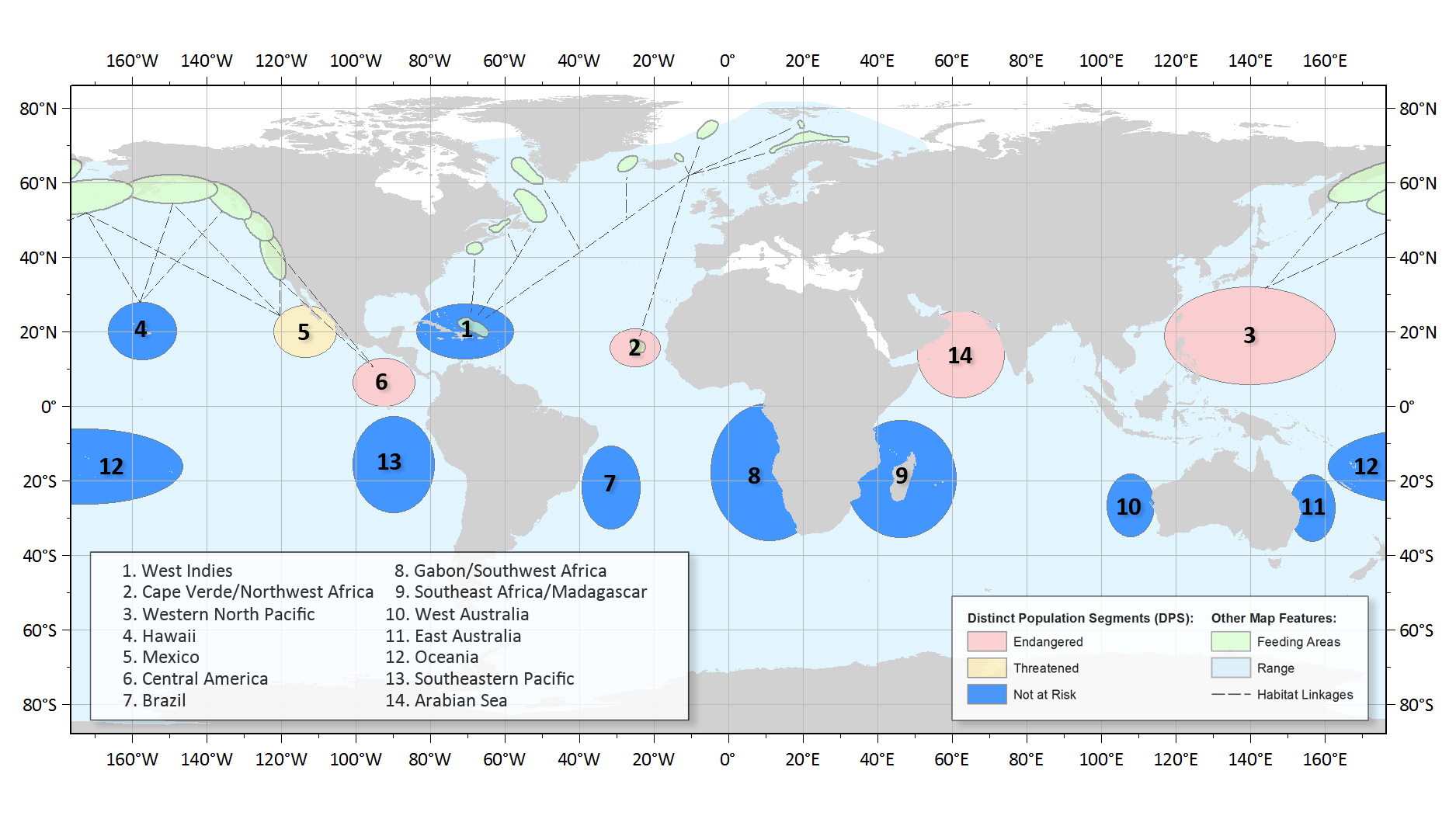
The bad news:
In 2016 NOAA Fisheries declared an Unusual Mortaility Event (UME) for the humpback whale along the Atlantic coast from Maine through Florida.
Since 2016, to date 255 humpbacks have been found dead along the east coast of the US. Necropsies (post-mortem exams) were conducted and of all whales examined, 40% showed signed of human interactions (evidence of entanglement and/or ship strikes). Since 2016, NY has had 47 strandings of dead humpbacks (36 in NYS waters and 11 offshore) (see https://www.fisheries.noaa.gov/national/marine-life-distress/2016-2025-humpback-whale-unusual-mortality-event-along-atlantic-coast). These deaths are predomminantly due to ship-strikes and entanglements.
You may have heard many people blaming Offshore Wind (OSW) exploration and development for these spate of deaths. To date there is absolutely no evidence that OSW has played any direct role in these mortalilities.
The NYS Environmental Technical Working Group (E-TWG) on offshore wind "formed a specialist committee in 2023 to develop communications materials to aid in the dissemination of accurate, readily understandable information around recent whale mortality events and the level of potential risk to whales from offshore wind energy development activities. In May 2025, that committe has released a comprehensive FAQ document that "intends to provide scientifically sound, accurate answers to address common questions" related to whale deaths and offshore wind (https://www.nyetwg.com/specialist-committees/wildlife-faqs/whale-communications). The FAQ document is available below (Offshore Wind and Whales-TWG final)
- if want want to help reduced these deaths, help convince vessel operators to SLOW DOWN.
- If you want to help, do what you can to reduce your electrical use (direct or indirect), reduce buying unnecessay things that are often shipped via massive cargo vessels.
- The most significant thing you can do is work in any way possible to reduce greenhouse gas (GHG) emmisions and increase GHG capture by planting native plants, and reducing conversion of planted areas to buildings and parking lots (i.e., land conversion)
Let the authorities know - report strandings!
It is critically important to immediately report any sightings of injured or stranded whales (dead or alive). In NY, call the NY Stranding hotline 631-369-9829. Elsewhere in the In the United States, make a report by calling the Greater Atlantic Marine Mammal Stranding Hotline at (866) 755-6622 or the Southeast Marine Mammal Stranding Hotline at (877) 433-8299. You can also contact the U.S. Coast Guard on VHF Channel 16. Do not approach injured or dead animals.
RELATED DOCUMENTS
ID'd humpbacks from CRESLI Eastern Long Island trips 2000-2023Offshore Wind and Whales-TWG final





